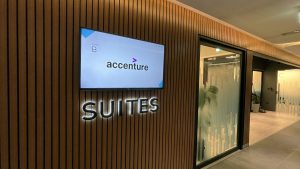Finding the perfect person for a vacancy can often involve trawling through hundreds of resumes and interviewing countless candidates. As a leader, it is probably one of the biggest challenges that we face, and the experience differs each time we have to hire someone new.
Whilst hiring is an inevitable part of running a company, recruiting the perfect candidate can be a time-consuming, frustrating process. A ‘bad’ fit can be costly; to your company, the bottom line and for the individual candidate who does not want their time wasted. It is not necessarily about picking the best person for the job, but the right person for the role. The individual needs to fit in with your company culture, have the skills needed to thrive and have the experience needed to succeed.
If you are looking to ensure that you pick the best fit your company, read on for our step by step hiring guide. From the job post to the sealing the deal, our top tips will help to ensure that whenever you hire someone new, it is always a win-win situation.
Defining the Right Candidate
Before you begin the job-hunting process, you must have a clear idea about what the right candidate for the job looks like. It is not set out in stone and this will completely depend on the job role, your company and so much more. Consider what strengths your employees bring to the table, what you will prioritize as essential or the skills and experiences that are desirable but not a necessity. However, you do not want to be over-prescriptive. A person who is perfect for the job may not necessarily be the best on paper.
The Job Post
Writing your job description is the first step in ensuring that you hire the right talent for your company and poorly written job descriptions can alienate potential candidates. Including a person specification and an in-depth job description will ensure that individuals can determine whether the role is right for them. The advertisement should grab the attention of the best candidates; it should have clear objectives, and be straight to the point when it comes to the requirements and responsibilities of the role.
In this modern-day and age, it is also important that you post your advert in the right place. Whether that is by using social media such as Facebook or Linkedin, relying on talent acquisition programs, recruitment agencies, or advertising in the local newspaper, making sure that your post reaches the attention of your ideal candidate can be tricky. You also need to think about whether you are advertising in house only or whether you prefer to hire someone on the base of a recommendation.
The Resumes and Application Forms
Your job post may receive hundreds of applicants, thousands of words on individuals’ work and education history, personal statements and hobbies and interests. The best way to whittle these down is through searching through the files using keywords. Whether it is an amount of experience required, a basic qualification, or a full driving license, search for your keywords then discard applicants that do not have this basic requirement. Repeat the process with multiple keywords, and eventually, you will have a smaller number for a more thorough inspection.
Resumes and application forms are a great way to get an idea as to how competent a candidate may be; they can provide an overview of their experiences and accreditations and their career history and trajectory. However, a curriculum vitae or an application filled out on-line cannot be a true reflection of the individual candidates. Whilst we often make snap judgments based purely on a person’s resume, they can only tell us the basic minimum. When you are reading through resumes, consider your company culture and how the individual is likely to ‘fit’ into the structure of your business.
The Interview
The interview is probably the most important step, and you should aim to interview as many suitable candidates as possible. To ensure that you choose the best possible talent, be creative with your questions. Not only should we acknowledge their aspiration and where they want to be in the next five years but also what their biggest weaknesses are, where they feel they can improve, and how they are ensuring their own personal and professional development. It is also important to think about the questions that the candidate asks. An interview is not just about you interviewing them to see if they are the right fit, it is also about them interviewing the company. Moreover, all interviews are fundamentally a social interaction, and some candidates have personalities better suited than others. For example, although an extrovert may be more successful in the interview process, it does not necessarily mean that they are the best fit.
Some interviewers may use this time to ask candidates to go through their resumes but ultimately this is just a waste of time. It will not provide a sense of their personality and how compatible it is with the culture of your company. Instead, get candidates to spend time with your existing team, and ask their opinions. If the individual is successful in the role, they are going to be spending lots of time together and a harmonious workplace is a happy one. Encourage feedback and ask staff their opinions regarding your hire.
Richard Branson, CEO of the Virgin Group, sums this up well by stating that ‘Personality is everything’. Skills can be learned and developed, experience can be gained, and qualifications can be earned, but having the right fit when it comes to personality is ultimately priceless.
Reflect and Evaluate
When we hire someone who does not work out, we often blame the individual. We may fail to acknowledge that hiring the wrong person is due to a mistake that we made as leaders and as a company overall. There is a need for accountability, and to ensure that the same mistakes are not made. As a result, it is important that we evaluate our hiring process regularly, and reflect on our own impact. Consider what mistakes were made, what areas can be improved and how you can develop your recruitment process for future success.




































